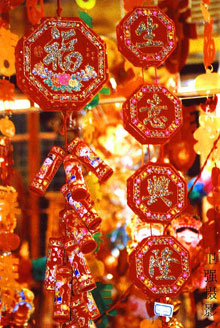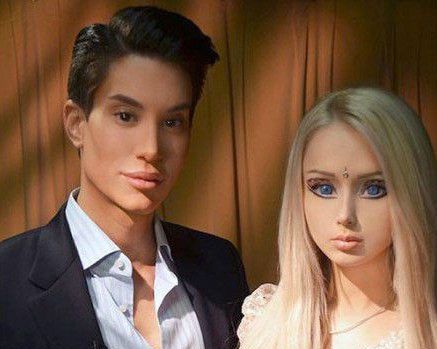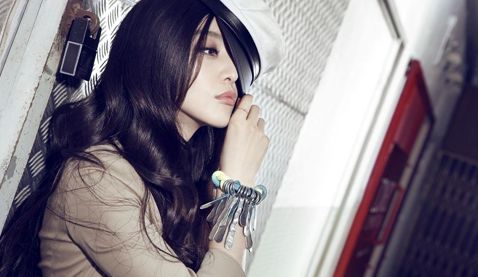海外华人眼中的春节
 The Chinese New Year celebration dates back to 2697 BC, when the ancient tradition marking the end of winter and beginning of spring. The start of the New Year is determined according to the Chinese Lunar calendar, a system created to measure time based on the moon cycle. That is why the Chinese New Year is also called the Lunar New Year or Spring Festival in China. Often the first day of the Lunar New Year falls into January or February of the Gregorian calendar. The Chinese New Year celebration dates back to 2697 BC, when the ancient tradition marking the end of winter and beginning of spring. The start of the New Year is determined according to the Chinese Lunar calendar, a system created to measure time based on the moon cycle. That is why the Chinese New Year is also called the Lunar New Year or Spring Festival in China. Often the first day of the Lunar New Year falls into January or February of the Gregorian calendar.Many Asians cultures celebrate the lunar New Year as well as the Chinese. The Vietnamese call itTet Nguyen Dan, meaning "first morning of the first day of the new year." The Korean names their new year "the first month of the year"Jung Whur. For the Chinese, traditionally the celebration lasts fifteen days, starting by exploding thousands of firecrackers and ending with a Dragon parade. Legend has it that a monster calledNian(meaning "year") used to haunt and eat people on New Year's Eve. A Chinese village lit firecrackers (an early version of gun powder) and pasted flaming red banners on their doors to work magic. To celebrate, the whole village turned out, danced, feasted and exchanged gifts. This gives birth to the lion dancing, dragon parade and giving out money in little red envelopes for the New Year period. New Year's Eve- The entire New Year observation starts with New Year's Eve, calledChu Xi. For believers, they go to a temple to pray for their ancestors as well as their own health and fortune for the coming year.
Visitation- After breakfast people start to visit relatives and friends by greeting each other "Happy New Year" or "Gong Xi Fa Cai" (May you prosper). Guests typically bring simple yet meaningful gifts, such as apples for peace and safety, oranges for good luck and sweets for happy life. Lion Dance- What in the store for third, fourth and fifth days isLion Dance(狮子舞). The tradition started around 100 AD in China. Drummed with gongs, the lions dance is meant to scare away evil spirits. Lion Dancers are traditionally young men and women of martial art clubs. They train together for years to acquire the skills of bravery, intelligence, endurance and team-work to perform the dance. The Dancers can make the lion's ears wiggle, the eyes blink and the mouth open and the tail wag. In some parts of China, the businesses, such as banks and shopkeepers, often invite the Lion Dancers to pay a visit for good luck. In turn, the dancers collect money from the business owners to give to the poor. Dragon Parade and Lantern Festival- On the fifteenth day, the holiday ends with a big dragon parade during the day and lantern festival at night. The Dragon is a symbol of strength and goodness in Chinese legend. A colorful long dragon, made of silk, paper and wood, appears with the exploding of the fire cracks. The Dragon chases a pearl, which stands for wealth, through out the Parade. Manyacrobatsand musician in various Chinese costumes also perform. The Chinese Zodiac- It is said Buddha or the Jade Emperor (the ultimate Emperor for the whole universe in Chinese legend) once called together all the animals on the earth for an important meeting. Only twelve animals turned up: the rat, the ox, the tiger, the rabbit, the dragon, the snake, the horse, the sheep, the monkey, the rooster, the dog and the pig. The rat, being the smartest, jumped on top of the ox to be the first one to arrive. This year is the Golden Pig (Boar) year and the New Year starts on February 18th, 2007. Happy Chinese New Year and Gong Xi Fa Cai (May You Prosper)!! |

 Red Envelope- The next morning, on New Year's Day, children often receive a red envelope under their pillows. Only paper money (coins are considered unlucky) are packaged with the meaning of prolonging their childhood without having to grow too fast (Ya Sui Money). Golden characters for fortune, happiness and prosperity are often written on these red envelopes. In Southern China, the envelope is called Lai See in Cantonese hence the Lai See Money.
Red Envelope- The next morning, on New Year's Day, children often receive a red envelope under their pillows. Only paper money (coins are considered unlucky) are packaged with the meaning of prolonging their childhood without having to grow too fast (Ya Sui Money). Golden characters for fortune, happiness and prosperity are often written on these red envelopes. In Southern China, the envelope is called Lai See in Cantonese hence the Lai See Money.






